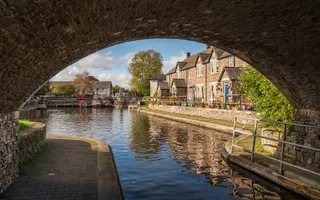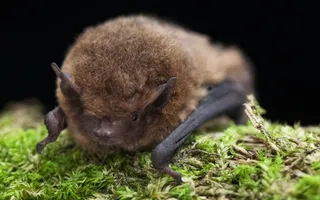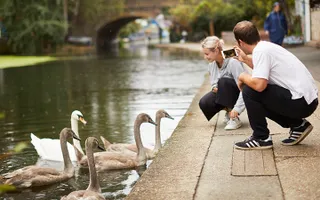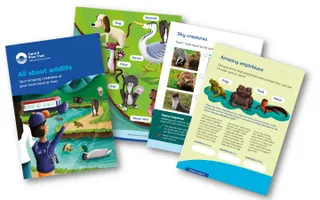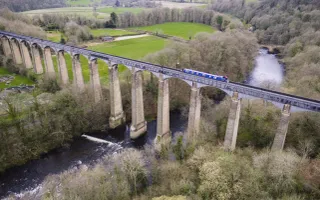Now, thinking of canals and bridges and things. I mean, a lot of this infrastructure was put in during the Industrial Revolution and everything like that, carrying really important goods and stuff into the hearts of cities. But actually, you know now, it’s been taken over by wildlife, and it’s amazing to see what moves in when you give it the chance to.
Yeah, absolutely. I mean these canals, some of them are 200 years old, even more in some cases. And these structures, like this really old bridge behind us, have been here for hundreds of years, giving wildlife plenty of time to make their own home out of that structure. Something like this bridge, you could have bats roosting up in the gaps, cracks, and crevices. You could have birds nesting in some of the holes. Sometimes, reptiles and amphibians might come out and bask in the grass that’s growing over the top of the bridge; just a fantastic habitat.
It’s just so important isn’t it? Something that could be deemed as kind of a man-made structure. Something that, you know, we’re the only species that gets any use out of it. But when you look in the details, you look in those cracks, and you see a bat, you know, hibernating or in torpor in there towards the end of the spring season, or you see those invertebrates, you realise just how important those structures can be if we give wildlife the chance to move back in.
Absolutely, yeah, I think that’s right. And it’s those structures that animals can then make a home of, even in the really urban city centres. We’ve got some pillboxes along some of our canals that we’ve prevented people from being able to get into because, sadly, they were just using them like giant litter bins. But we’ve created habitat inside them for bats to come and move in. And so that will hopefully give the bats a really safe and secure, temperature stable place that they can move into, right in the heart of our city centres.
I love that, and I love bats as well. I love to see, you know, more bats around the city centre. I mean, I live in central Southampton, and I don’t get to see many, other than when I go to the outskirts in the New Forest and such. And it’s such a shame, and we’ve just got to learn to be more tolerant and share our space with the wildlife.
Absolutely, I mean, the canals are a fantastic super highway for bats. There’s everything they need. They’ve got shelter from the trees and the hedgerows on either side. They’ve got ample food, foraging over the water surface. And then those waterways come right into the city centres. But they also, in the opposite direction, can go quite into really rural areas where there are woodlands and places that bats are going to be roosting. It’s just a great super highway.


